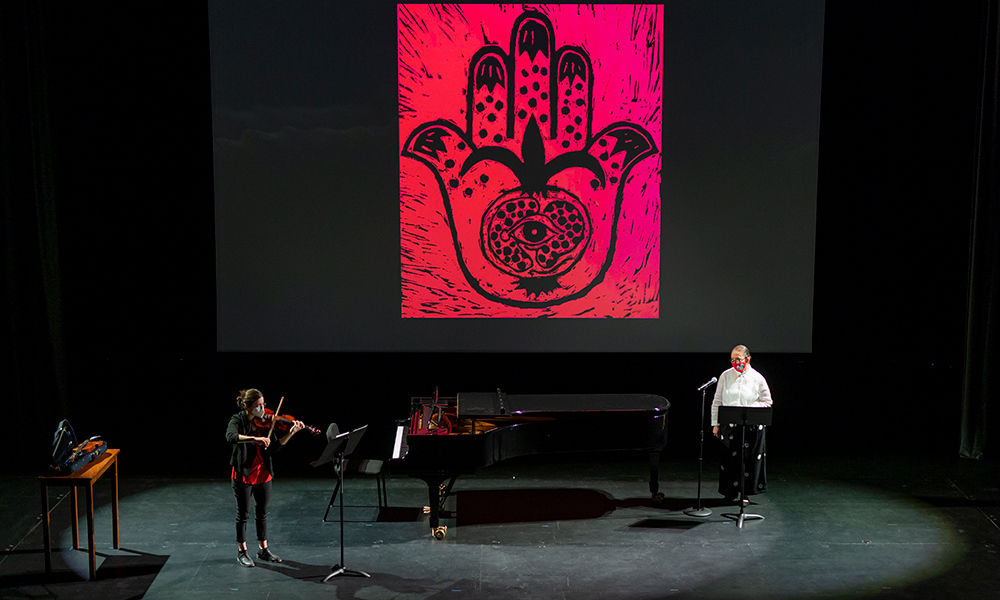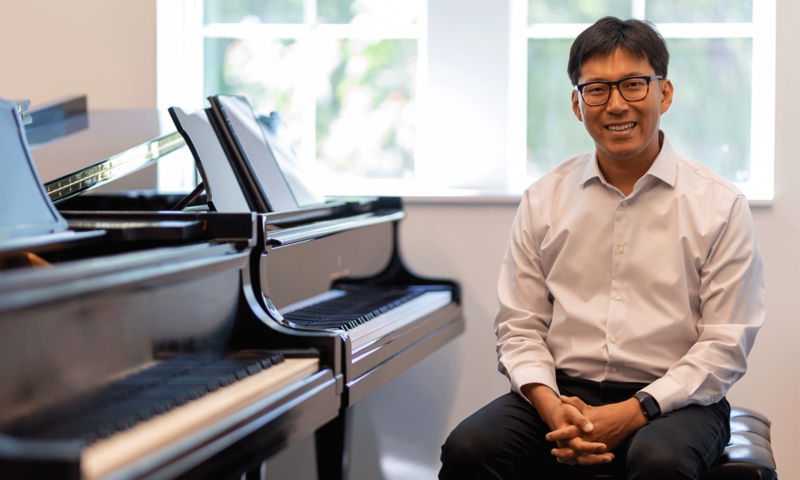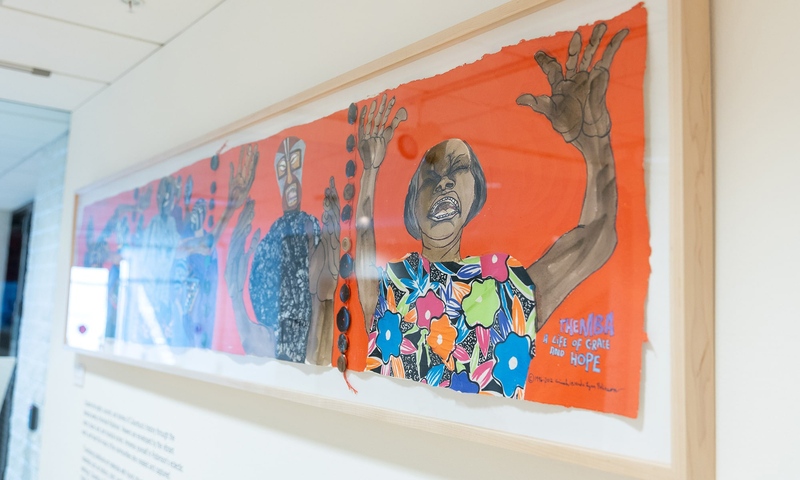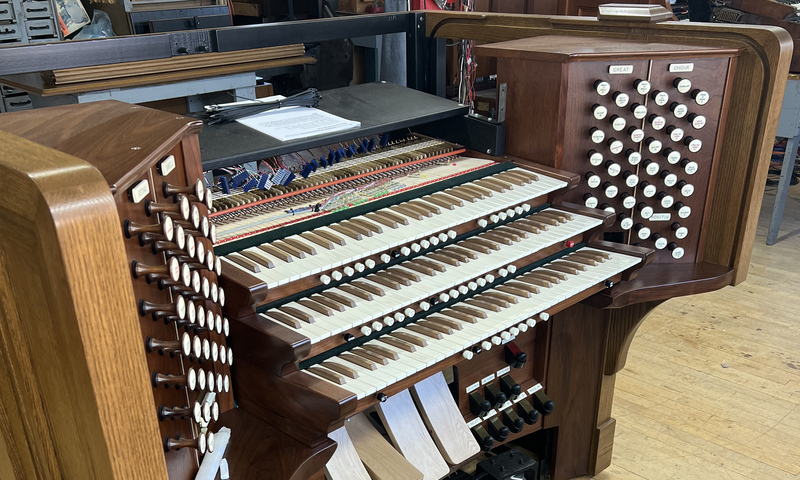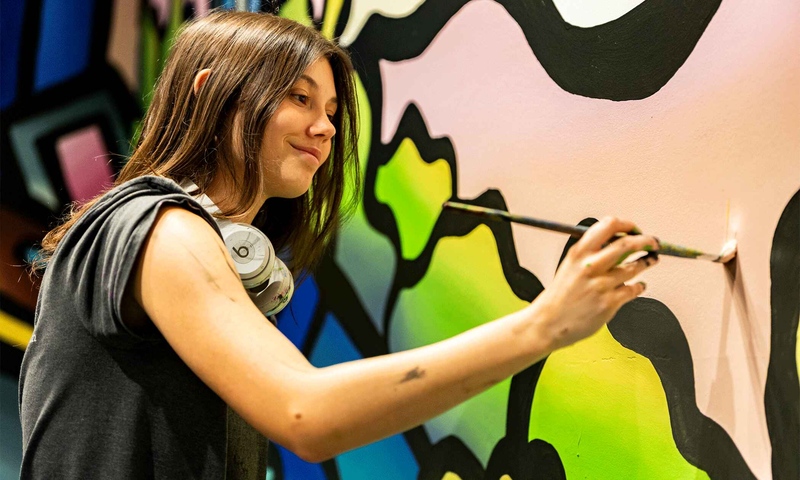The importance of art - especially in a world divided by COVID, politics, and distance - is a tangible thing to Denison Studio Art & Queer Studies Professor Ron Abram.
Art is a bridge that connects our individual identities to one another, “the empathetic act of discovering what links us together reveals the creative process of artmaking, as well as the differences and commonalities tied to larger universal humanist issues and experiences,” he says.
A recent creative experience of discovery for Abram happened recently on campus with faculty colleagues from music and modern languages departments. This collaboration was one of several that have spanned the course of Abram’s 40-year art career (and 26 years as faculty at Denison teaching drawing and printmaking classes).
Following the leadership of music professor Hanna Hurwitz, who initiated the Tejido de Voces / Woven Voices project more than a year ago, Abram created a series of prints inspired by the musical compositions Hurwitz selected for the concert event that occurred in March 2021.
Alongside Hurwitz, modern language professors Monica Ayala-Martinez and Mary Beaton (narrating Spanish and English language texts), and music professor Sam Reich on piano, Abram created a series of relief prints that were projected as backdrops for the performance.
His interpretation and illustration of the music in Tejido de Voces extended themes found in his own body of work while also exploring his Latin lineage from a gay man’s perspective.
“While I knew I didn’t want to interpret the songs literally and had my own process of research with the work, I knew I also wanted the audience to emotionally interpret the work on a metaphorical level for themselves,” says Abram.
“Along with the projected prints, I created an artist book style concert program for the concert, so on a visual level it’s all a celebration of printed matter. Creating the work as relief prints connects the visuals thematically to the sources found in Hanna’s musical selection- the history of woodcut and linoleum prints in Mexican and Spanish cultures.”
A big motivating factor for Abram to participate in the project was Hurwitz introducing him to the 1955 novel Pedro Paramo by Juan Rulfo, a source for one of the violin pieces she performed. The book (about a town populated by ghosts) influenced the writer Gabriel Garcia Márquez in writing his 1967 literary masterpiece, One Hundred Years of Solitude. Abram cites that book as one that’s haunted and influenced his work since first reading it in graduate school in 1984.
Abram loves to collaborate with other artists, curators, teachers and performers. “Especially at Denison, these often risk-taking projects have allowed me to extend my professional goals as an artist into my life as an educator and member of this community.”
“Often through class projects, I’ve collaborated with colleagues and classes in dance, education, physics, English, music, modern languages, queer studies, women’s and gender studies, the Denison Museum, Denison Library, service-learning and journalism.
“This work is important to who I am and demonstrates why each new year as an artist and teacher reveals new opportunities and discoveries for myself and my students. Denison has always been fertile ground for breaking disciplinary boundaries and along with everyone here, our Fine Arts Division students and faculty so vividly represent that on a daily basis for me.”
“With this project, the best moment was not me alone in my studio making the prints, but sharing the work, and hearing Hannah’s beautiful violin filling the Sharon Martin Theatre in Eisner with its sounds. Along with the poetry of Monica and Mary’s powerful narration, and hearing Sam play next to his music department colleague Hannah — that’s what made these prints come alive!” he says.
“When collaborations are great, the final outcome isn’t quite you, and isn’t quite the other person, but it’s this new entity all together…a new creation. It brings together all these different individualities and diverse perspectives into a new one of a kind expression.”
For a further look at Abram’s work for Tejido de Voces as well as a career overview of his work visit Ron Abram’s website.
